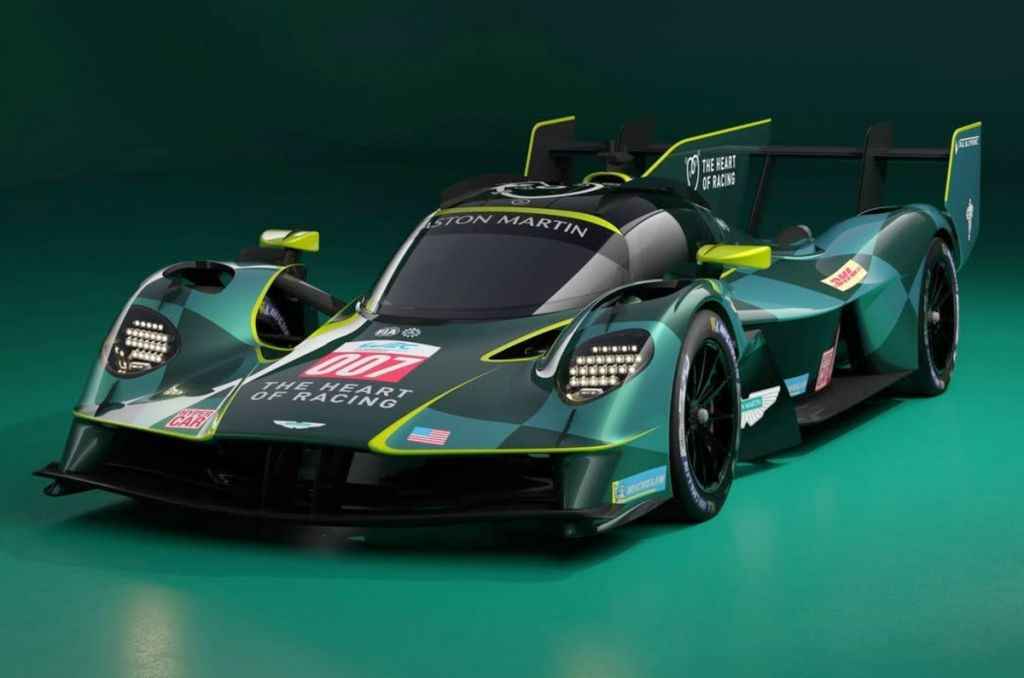
Aston Martin has revealed its Valkyrie LMH (Le Mans Hypercar) race car with which it will compete in the top rung of the World Endurance Championship (WEC) and US-based IMSA championship. It will be the only road car-based LMH entry to compete in both championships, and the only one with 12 cylinders.
With this, Aston Martin will be gunning for outright victory at the 24 Hours of Le Mans for the first time since 1959.
- Valkyrie racer to make competitive debut at Qatar 1812km race
- Aston Martin to field three entries for Le Mans
Aston Martin racing in WEC and IMSA
While other manufacturers like BMW, Porsche and Alpine have gone down the LMDh (Le Mans Daytona h) route, Aston Martin has built its car as per the LMH rules, which allows for a lot more bespoke parts. This makes it the first LMH car to compete in both, the WEC as well as the IMSA championships.
The race car is based on the road-going Valkyrie that was jointly developed by legendary F1 designer Adrian Newey and Aston Martin Chief Creative Officer Marek Reichman. “It would be almost unimaginable for Adrian, one of the greatest racing car designers in history, to design a car and not think about it going racing at some point,” said Adam Carter, Aston Martin’s Head of Endurance Motorsport.

The Valkyrie racer will be powered by a modified version of the road-going car’s 6.5-litre naturally aspirated V12, built by Cosworth. While this engine makes 1,145hp in the production-spec Valkyrie, it’s been modified to be better suited for endurance racing in the race car. As per LMH rules, power will be capped at 679hp.
“Running lean to reduce the amount of fuel you are carrying to deliver the required stint energy is important,” explained Carter. “We operate the engine slower than it's capable of because we require less power. The lower power limit within the regulations creates an opportunity for us to revisit the torque curve and reduce frictional losses by reducing engine speed to increase fuel efficiency.”
Further race-specific changes include “quick-change” front and rear bodywork, a single-point rapid refuelling coupling, a high-speed pneumatic jack system incorporated into the chassis and a driver cockpit optimised for safety, quick access and visibility.
Aston Martin’s cars will be run by The Heart of Racing (THOR) team, which has previously supported the brand’s factory effort in the GT3 class.
Aston Martin WEC, IMSA drivers
The brand will field two cars in the WEC. Two-time Le Mans class winner Harry Tincknell will be joined by rising British star Tom Gambler in the No. 007 car (a nod to Aston Martin’s James Bond connection). The sister No. 9 car will be piloted by three-time FIA GT World Champion Marco Sorensen and LMGT3 race winner Alex Riberas.
Aston Martin’s WEC racer will sport its traditional British green livery. The car will make its competitive debut in the opening round of the 2025 WEC, the Qatar 1812km race, on February 28.
In IMSA, Aston Martin will field just one car that will be driven by long-time factory driver Ross Gunn and 2022 GTD class champion Roman De Angelis. The IMSA racer will run a special THOR blue livery, starting from the Sebring 12 Hours in March.
The brand will enter three cars in the famous 24 Hours of Le Mans race, though, with both Gunn and De Angelis joining the team’s full-time WEC drivers.
Also see: